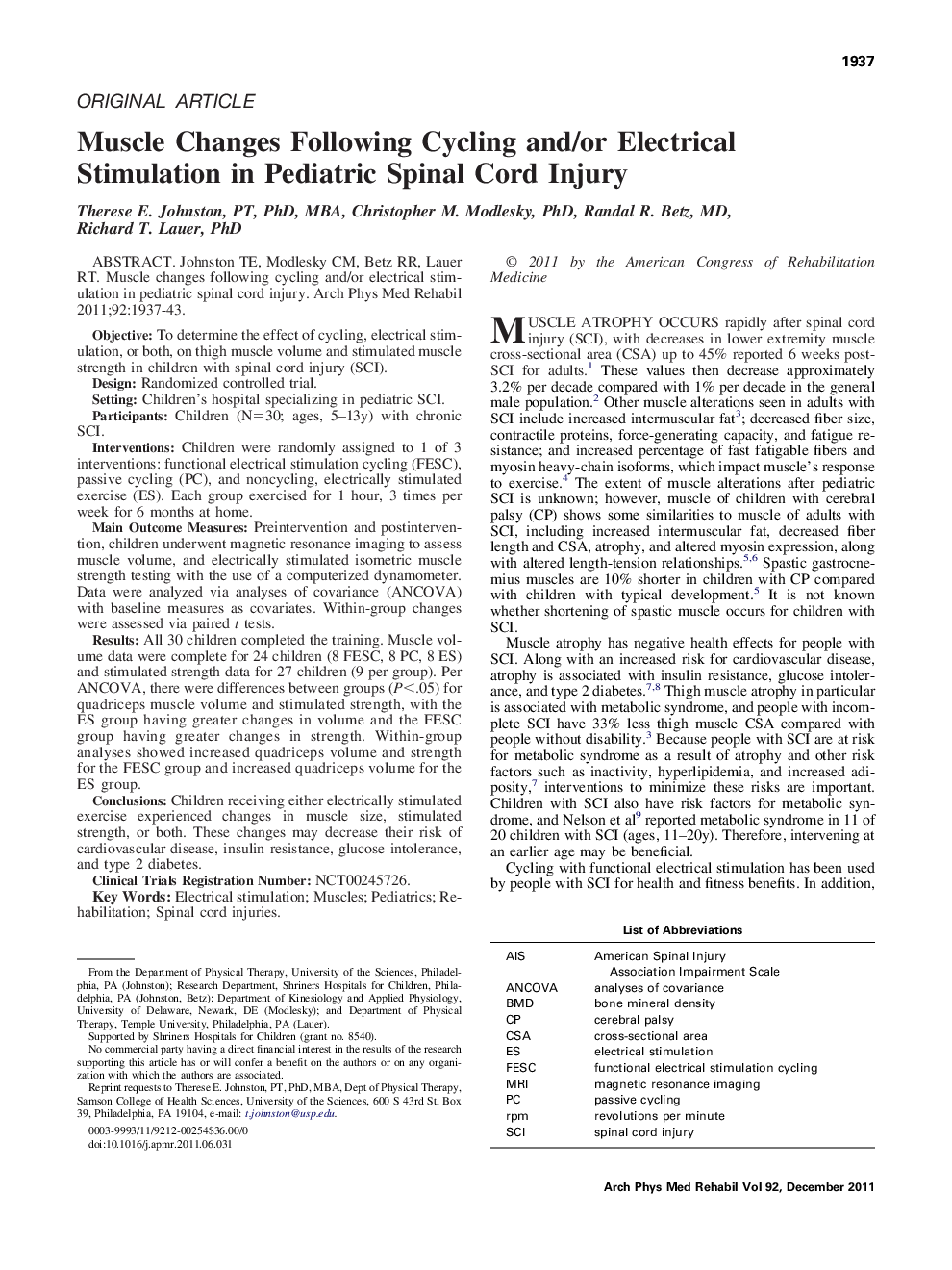| کد مقاله | کد نشریه | سال انتشار | مقاله انگلیسی | نسخه تمام متن |
|---|---|---|---|---|
| 3450342 | 1595732 | 2011 | 7 صفحه PDF | دانلود رایگان |

Johnston TE, Modlesky CM, Betz RR, Lauer RT. Muscle changes following cycling and/or electrical stimulation in pediatric spinal cord injury.ObjectiveTo determine the effect of cycling, electrical stimulation, or both, on thigh muscle volume and stimulated muscle strength in children with spinal cord injury (SCI).DesignRandomized controlled trial.SettingChildren's hospital specializing in pediatric SCI.ParticipantsChildren (N=30; ages, 5–13y) with chronic SCI.InterventionsChildren were randomly assigned to 1 of 3 interventions: functional electrical stimulation cycling (FESC), passive cycling (PC), and noncycling, electrically stimulated exercise (ES). Each group exercised for 1 hour, 3 times per week for 6 months at home.Main Outcome MeasuresPreintervention and postintervention, children underwent magnetic resonance imaging to assess muscle volume, and electrically stimulated isometric muscle strength testing with the use of a computerized dynamometer. Data were analyzed via analyses of covariance (ANCOVA) with baseline measures as covariates. Within-group changes were assessed via paired t tests.ResultsAll 30 children completed the training. Muscle volume data were complete for 24 children (8 FESC, 8 PC, 8 ES) and stimulated strength data for 27 children (9 per group). Per ANCOVA, there were differences between groups (P<.05) for quadriceps muscle volume and stimulated strength, with the ES group having greater changes in volume and the FESC group having greater changes in strength. Within-group analyses showed increased quadriceps volume and strength for the FESC group and increased quadriceps volume for the ES group.ConclusionsChildren receiving either electrically stimulated exercise experienced changes in muscle size, stimulated strength, or both. These changes may decrease their risk of cardiovascular disease, insulin resistance, glucose intolerance, and type 2 diabetes.Clinical Trials Registration NumberNCT00245726.
Journal: Archives of Physical Medicine and Rehabilitation - Volume 92, Issue 12, December 2011, Pages 1937–1943